In a recent class, student Robin Johannsen was ready to get started on her dog’s collage portrait—her classic tomato pincushion loaded and ready to go (photo above). I’ve begun paying attention to these often overlooked prickly additions to our creative spaces—specifically, pincushions brought to classes. They’re utilitarian of course, but I’m suspecting that there are stories behind quite a few of them.
Pins themselves are somewhat overlooked, not high on the list of “fabric collage materials” but really are an integral part of the process. If not pinned, all the little pieces of fabric involved in the making of a fabric collage quilt are very mobile. A breeze or a sneeze—or in my case, a cat leaping onto my pinning board to get my attention—can dislodge those “perfect” placements. I always have pins handy as I work on my collages, and use them liberally, rendering my fabric collage its own sort of temporary pincushion (see detail photo of “Monarch Maia” in progress below). For me, putting a pin into a piece of fabric, indicates that I’m satisfied enough at that given moment to commit a pin to it.
Pins indicate to my brain that I’ve done the work in a particular area of the collage, and if I want to, I can safely move onto the next area. Pinning the fabric pieces in place is something I do automatically—it’s routine, and somehow, they need to be contained. I don’t think much about. Until I’m teaching in a class.
Put a Couple Pins in It
I spend most of a teaching day moving through the class checking in on the progress of each student. There’s always a few fabric pieces on the board, waiting for me to give the thumbs up, but no pins holding them in place. This makes me anxious. It looks precarious. All that thought and work with no insurance against a stray cough or bump to a board.
So I say, “Let’s put a pin in it.” Better yet, put a couple pins in it. When you use two pins per fabric piece, they keep that piece from swiveling to one side or another, out of place. Then, I look around for their pins, to demonstrate that thought.
“Do you have some pins?” I ask. They might bring out a box of pins, or maybe a very practical pincushion of the magnetic variety, such as Montana student, Sunne Brandmeyer’s above, which is the variety “cushion” I most often use.
But sometimes a student will bring out an unusual or cute little pincushion. They might tell me a brief story about it. Once in a while I remember to take picture of a pincushion, just because it tickled me in one way or another. Earlier this year, I started thinking that this subject of pincushions could be something to share in a blog post. So I started taking a few more photos here and there in my classes.
Then in June, during my second week teaching at the Quilt Gallery in Kalispell, MT, it seemed that every other person had brought a unique pincushion to class. Was I just beginning to really notice them or was it an unusual pincushion coincidence?
The following photos are all from that Quilt Gallery class. Lorna Greenwood, brought not only the sunflower cushion above, but also the striped knitted “cupcake” seen below. Her friend Teri Dahl, brought the sweet little stuffed butterfly below right.
Walking around one morning, I noticed that Cindi Guridi’s simple pillow cushion was made with fabric that matched in colors and featheriness to the rooster subject of the collage she was working on. The purple pear pincushion that Quilt Gallery owner Marianne Buller had at her table, was matching her fabric selection.
Ruth Knoch was another two-cushion student with a well-aged tomato and a more recent looking Hello Kitty pincushion bracelet below. It seemed an unusual pairing. I wonder if there’s anything special about those two choices?
Have Pincushion, Will Travel
In the post about this particular Montana class, I noted how Marci Robman decorated her table with a polar bear figurine (inspiration for her polar bear collage portrait) who changed poses each day. In the photo below, the friendly mountain goat (her color inspiration) is asking the bear “Hi! What’s your name?”
But in the foreground of the photo, is the pincushion that also came along to decorate Marci’s space—a padded Mary Jane shoe—holding just a few pins, but possibly more importantly, two tiny pieces of fabric. What is she saving them for? They’re not from the fabrics she was using for her bear collage.
Kaye Burns, a student who I’ve gotten to know better through a few classes, tickled me with both the color oriented organization of her pins and the practical way she transported her stacked pincushion below.
That Tupperware container is not small. She had to want to pack that pincushion for travel across a couple states in order to use it in class. In noting how Kaye arranged her work space, the pincushion (which happened to match her fabric pallet) stayed in its confines, with the lid acting as a corral for other tools.
Kaye’s friend Cynthia Chaddick, another repeat student, decorated her pinning board below with a pincushion and a tool pocket. The two are color coordinated—by chance or intent? Pinned to the pocket is a fortune-cookie inspiration: “Always be open to new ideas.” That’s a sentiment I can get on board with. Click on link above to see the varied fabric collage quilts of both Cynthia and Kaye.
Earlier in the year, at Empty Spools Seminars, I noticed this turtle pincushion below, brought to class by Candi Smith, who was doing a sea turtle as her subject. Seems like inspiration and motivation to me.
At the second Empty Spools session, Suzette Bowen brought a travel companion in the form of a little grey mouse cushion below. The very cuteness of it caught my eye.
A couple months later, at my Harpswell, Maine quilt retreat, Leigh McMorrow’s pincushion peeked out from under her fabrics in photo below. A “quilter’s tart” tucked into a vintage tin.
These pin cushions get me thinking how we create in our studios at home—what we surround ourselves with, but especially what we bring with us when we wander away from home. Why do we find these special pin cushions important enough to include on our packing lists?
The more I think of it, maybe these familiar items provide a little comfort—consciously or not—a touch of home on the road, if you will. Working in a classroom is a challenge, attempting to accomplish something focused and special amid a lot of outside energy coming at you. When my students bring these personal touches with them to class, they are in essence taking control of their temporary work space, making it their own for the length of the workshop.
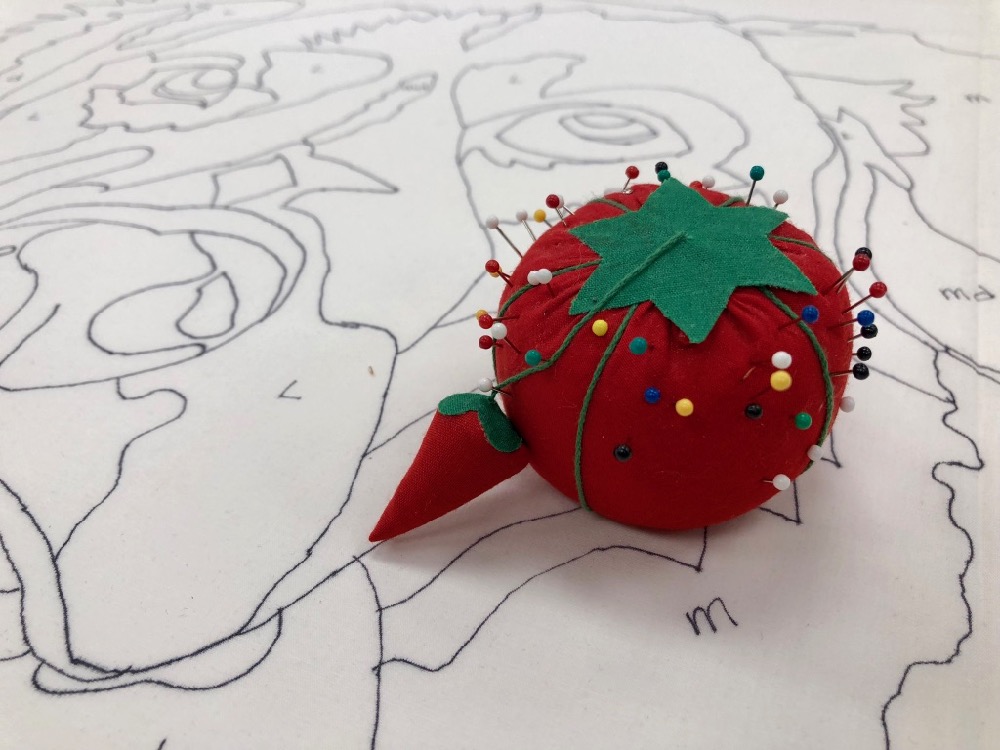
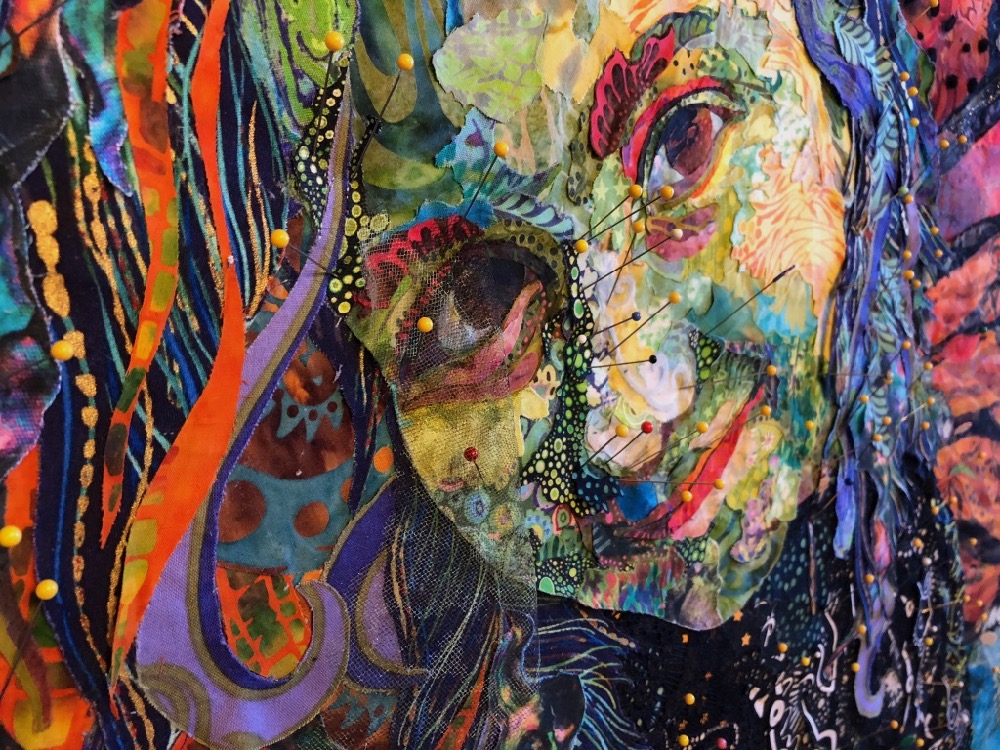
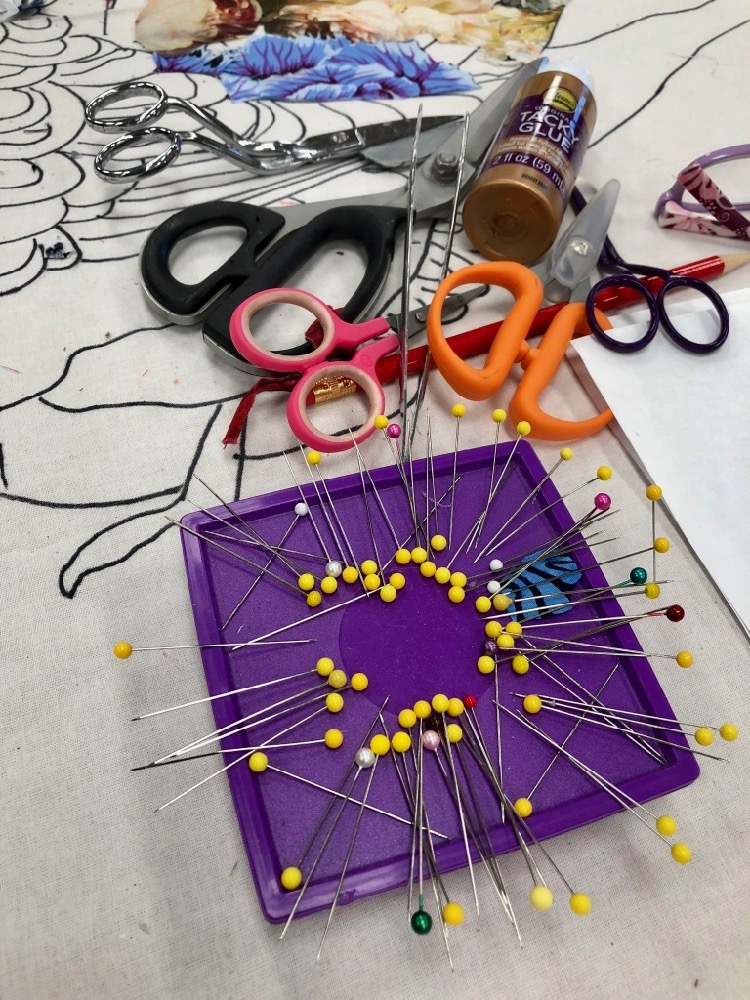
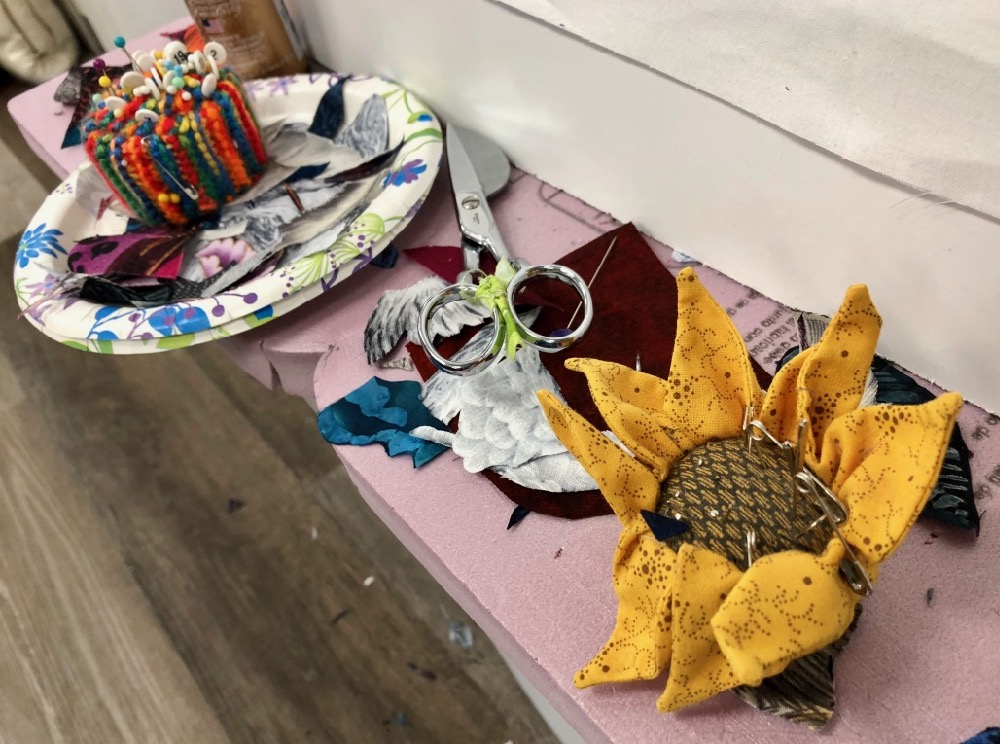




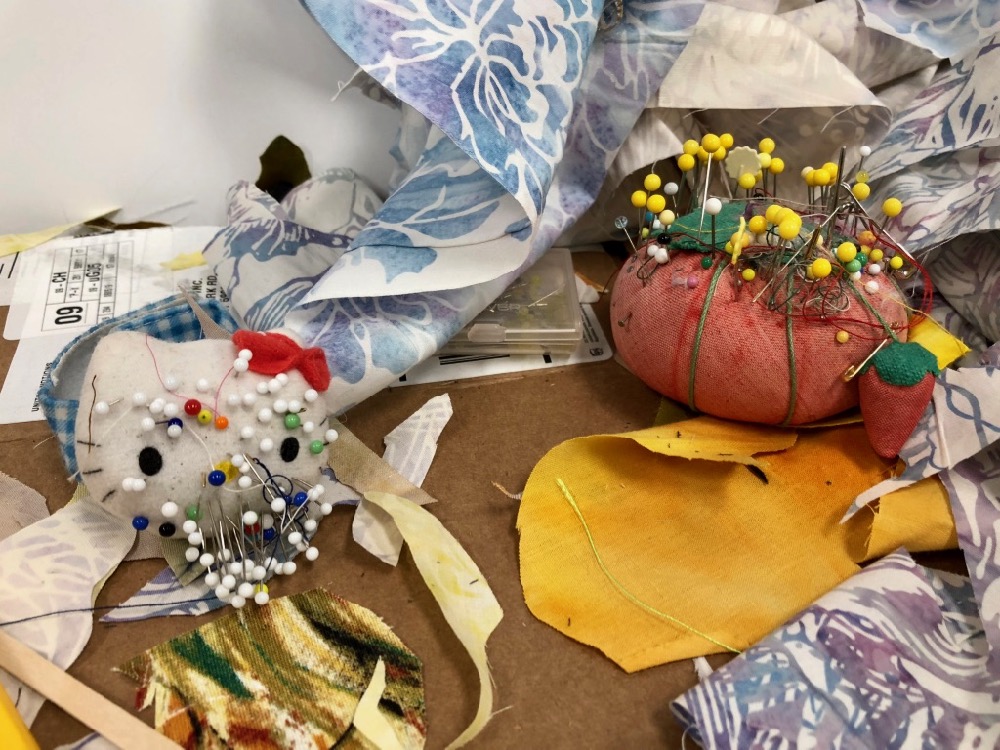
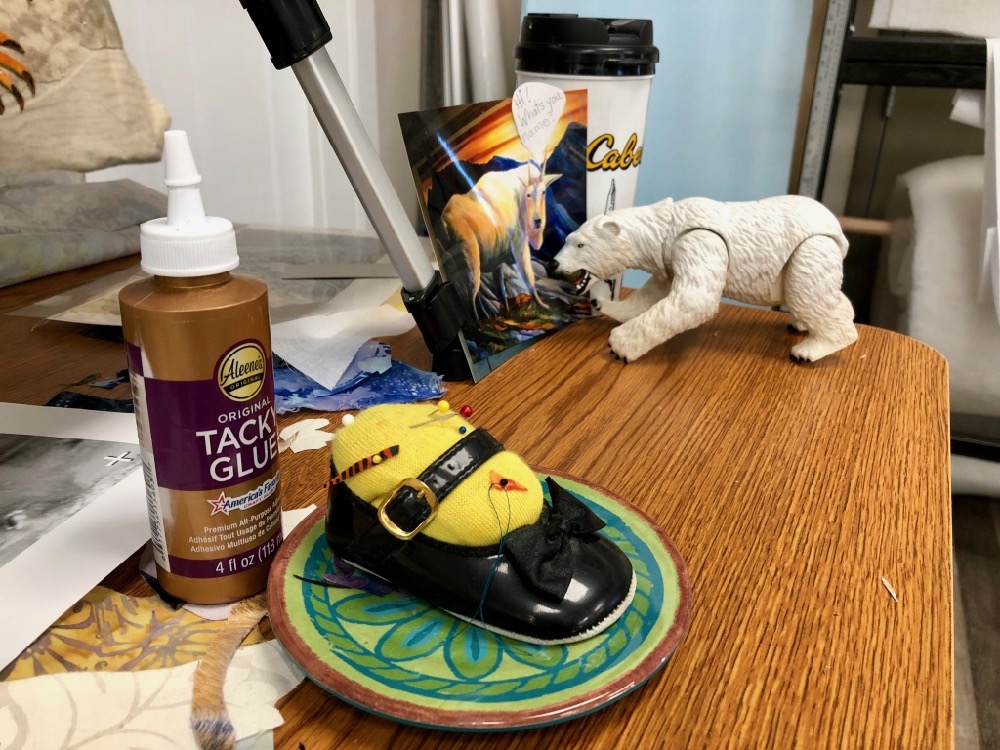
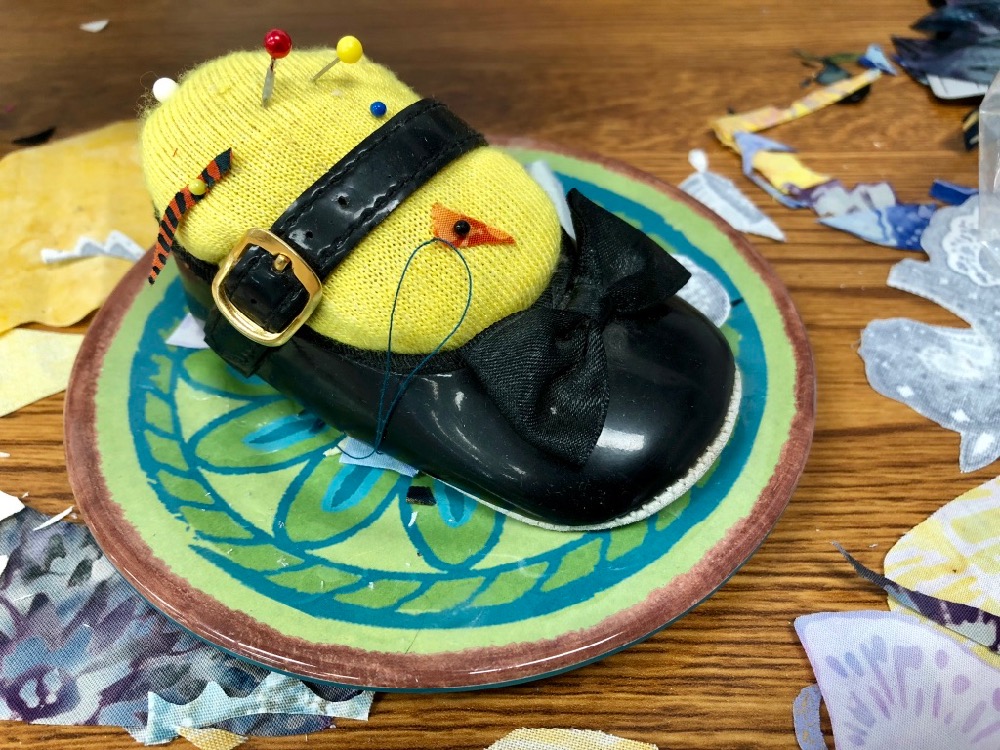
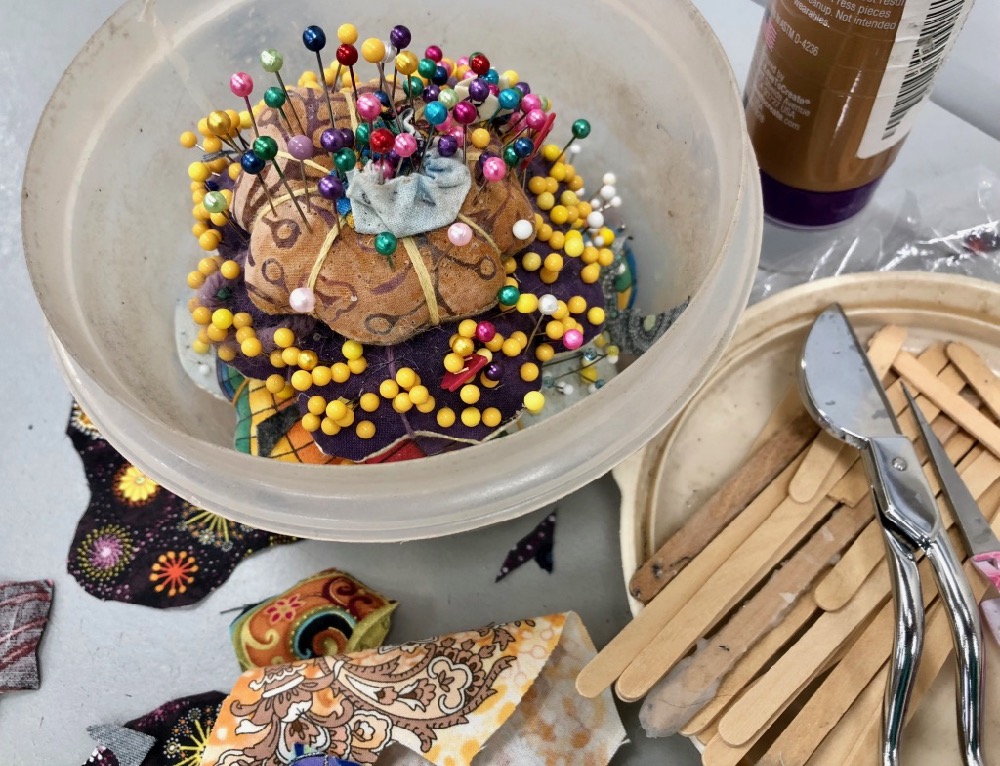
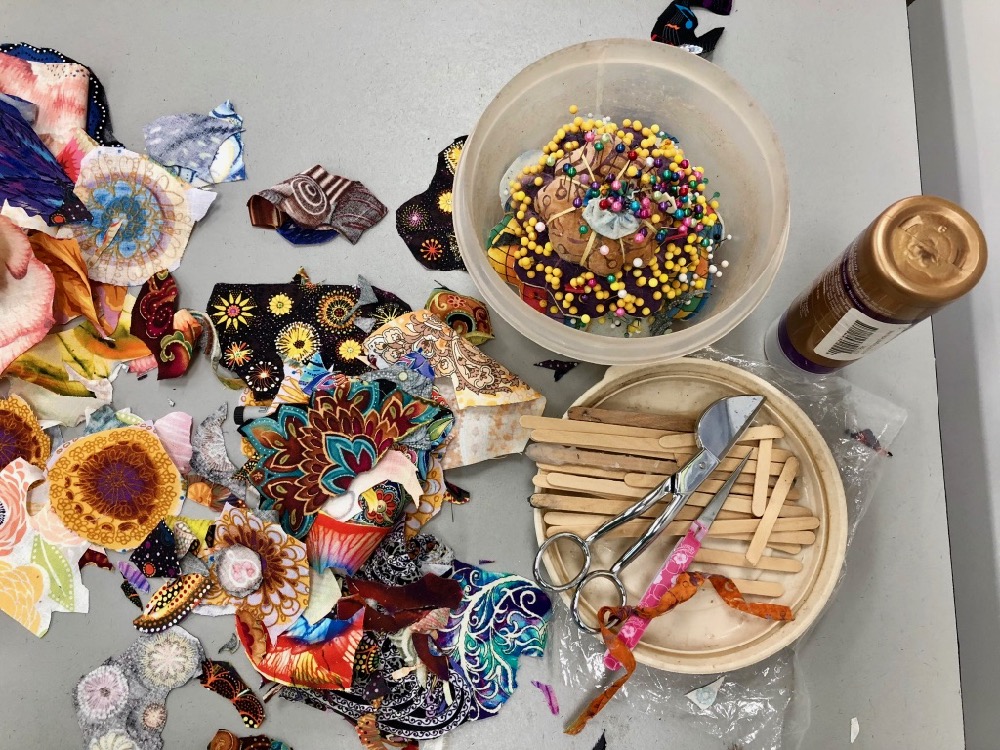
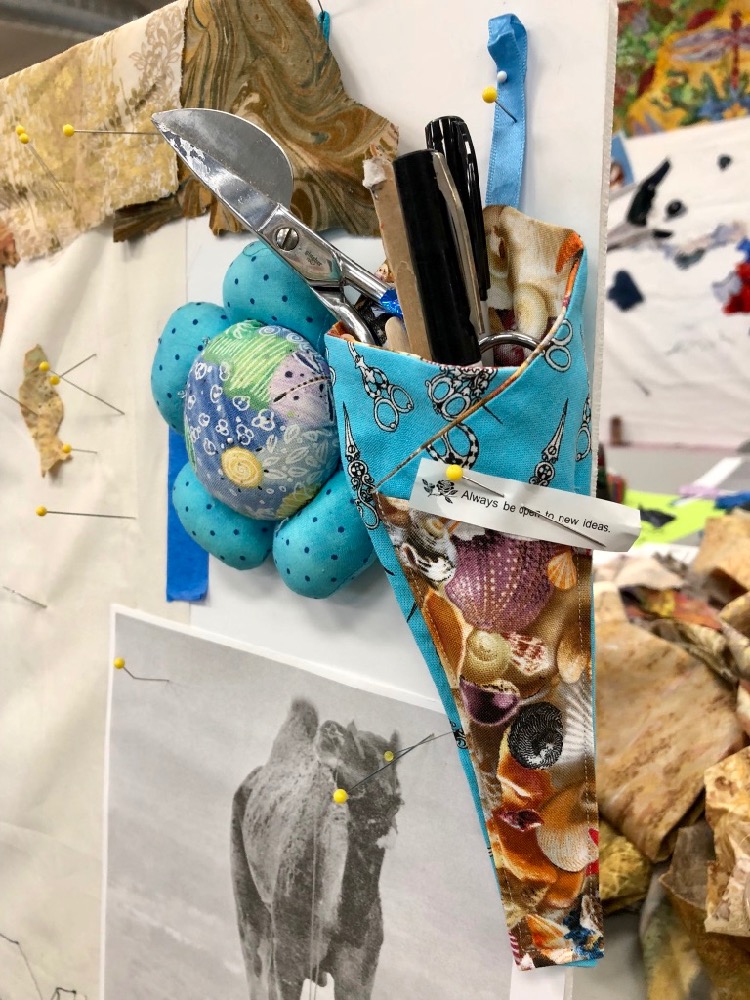
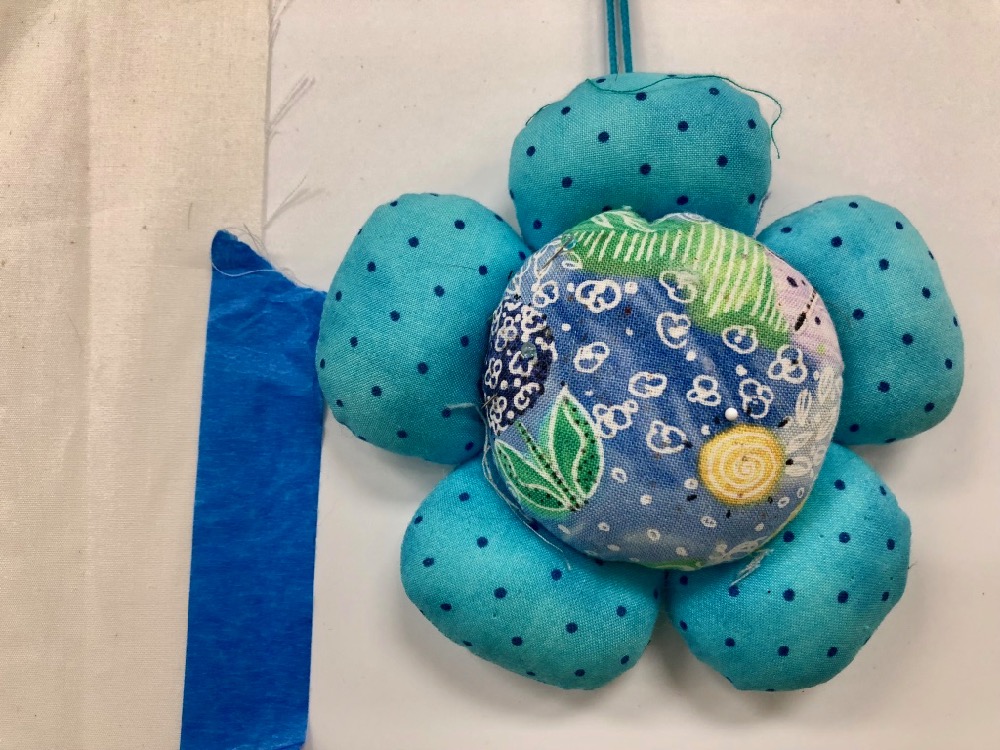
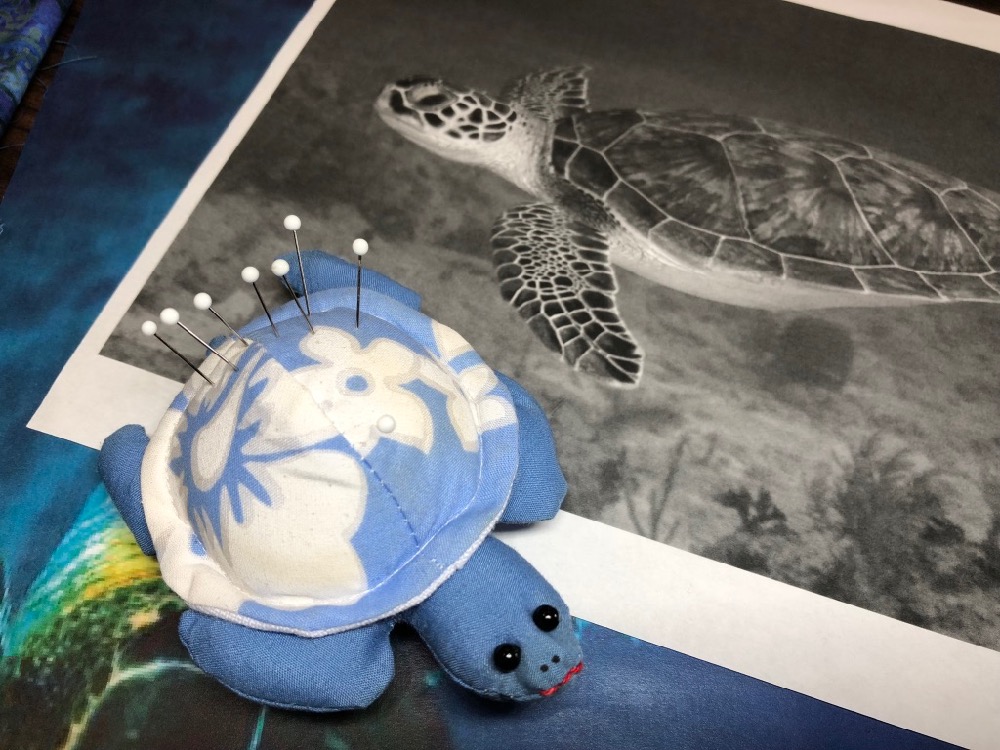



Yes, I too have favourite pincushions, one tortoise,and a mouse given to me by a dear friend.
Thank you for this very revealing mail, a real touch of tenderness.
I love attention to ways we bring familiar into unfamiliar.
I have always used a wrist pincushion. The one I currently use is a heart, and I’ve had it for 20 years and the elastic has stretched out so far, I’ve fixed it several times. My original one was a magnetic red one. I’m not sure I could find a pincushion on my table. My wrist seems a safe place.
I really like pincushions too. I especially like the one made from a baby shoe. I have some old ones that would be perfect! Thanks for sharing your process. I was “straightening up” in my chaos today. Found your Specimen catalog and Free Style Quilts. Good stuff!
Thanks for your post about pin cushions. I have one of those tomato pin cushions. In one section my now 28 year old daughter wrote “I love you.” Those pins MUST be left untouched. I have the rest of my pins organized by type in the other sections. Yes pin cushions are personal and comforting.
Thoroughly enjoyed your musings about pincushions. It’s always fun to see how others set up their spaces